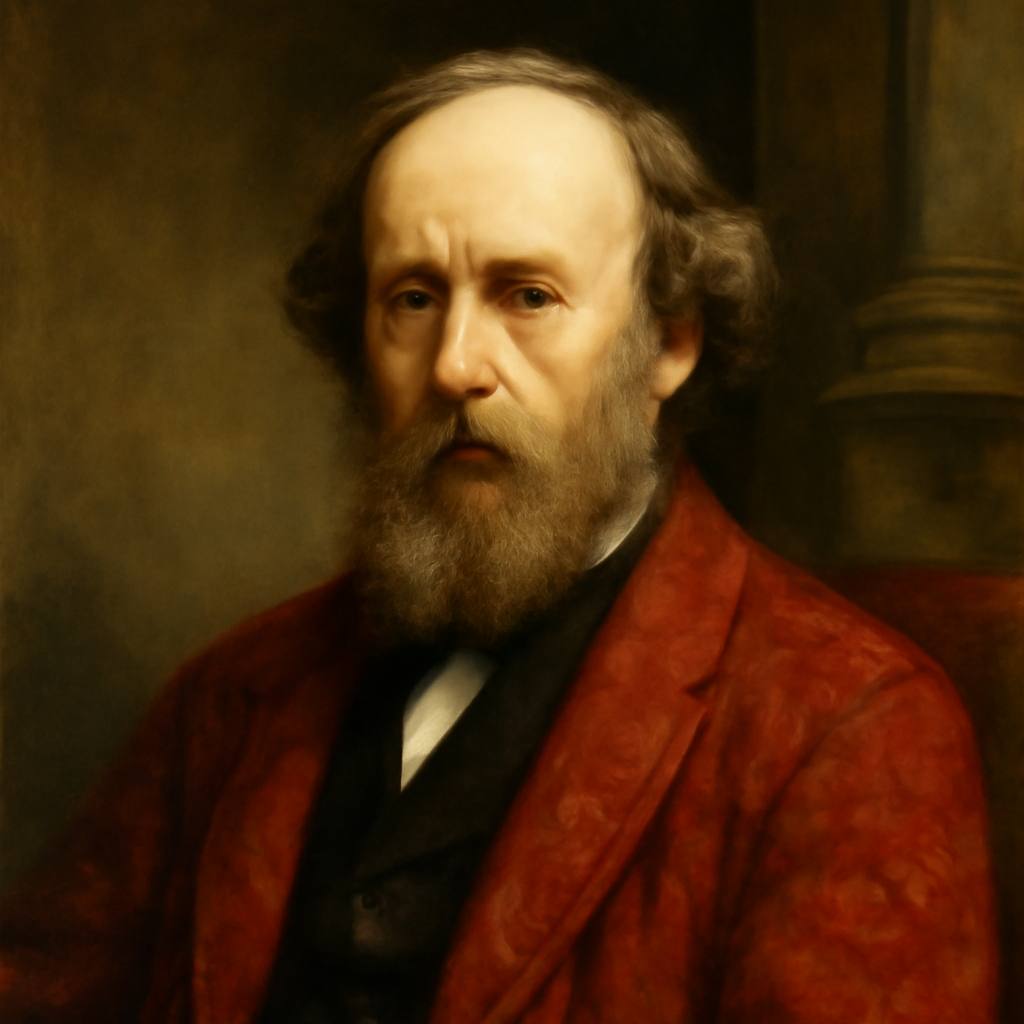1 Poems by William Allingham
1824 - 1889
William Allingham Biography
William Allingham, an Irish poet of the 19th century, remains a figure of enduring interest in the literary world, particularly among scholars of Victorian and Irish literature. Born on March 19, 1824, in Ballyshannon, County Donegal, Allingham grew up in a world straddling the fading Gaelic traditions and the encroaching modernity of British rule. This unique position would profoundly influence his poetic voice and subject matter throughout his career.
Allingham's early life was marked by the gentle landscapes of his native Donegal, which would later feature prominently in his verse. The son of a bank manager, he enjoyed a comfortable upbringing that afforded him access to education and literature. However, the young Allingham was not destined for a conventional path. Despite his father's wishes for him to pursue a career in banking, William's passion for poetry and literature began to manifest early in his life.
At the age of fourteen, Allingham entered the banking profession, working as a clerk in his hometown. This early foray into the world of finance, while seemingly at odds with his poetic inclinations, provided him with a steady income and a unique perspective on the changing economic landscape of Ireland. It was during these years that Allingham began to seriously pursue his literary ambitions, penning his first poems and developing his distinctive style.
Allingham's poetry is characterized by its lyrical quality, often drawing inspiration from Irish folklore, landscapes, and the everyday lives of the people he encountered. His work "The Faeries," published in 1850, is perhaps his most widely recognized poem, capturing the enchanting and sometimes mischievous nature of Irish fairy lore. This piece, with its memorable opening lines "Up the airy mountain, Down the rushy glen," has since become a staple of Irish literary heritage, frequently anthologized and recited.
The poet's career took a significant turn in 1846 when he secured a position in the Customs service. This new role allowed him to travel throughout Ireland, exposing him to a broader range of experiences and landscapes that would enrich his poetic repertoire. It was during this period that Allingham began to gain recognition in literary circles, both in Ireland and England.
Allingham's connections with the Pre-Raphaelite Brotherhood, particularly his friendships with Dante Gabriel Rossetti and Ford Madox Brown, played a crucial role in shaping his artistic sensibilities. These relationships not only influenced his poetic style but also led to collaborations, with Rossetti providing illustrations for some of Allingham's works. The poet's association with this influential group of artists and writers placed him at the heart of the Victorian literary scene, despite his relatively modest origins.
In 1854, Allingham published his first volume of poems, simply titled "Poems," which received favorable reviews and established him as a poet of note. This was followed by several other collections, including "Day and Night Songs" (1854) and "Laurence Bloomfield in Ireland" (1864), the latter being an ambitious narrative poem addressing the social and political issues of 19th-century Ireland.
Allingham's poetry is notable for its musicality and attention to natural detail. His keen observations of the Irish landscape and its people are evident in poems like "The Winding Banks of Erne," which paints a vivid picture of his beloved Donegal. However, his work was not limited to pastoral themes; Allingham also engaged with the political and social issues of his time, albeit often in a more subtle manner than some of his contemporaries.
The poet's personal life took a significant turn in 1874 when he married Helen Paterson, a talented illustrator sixteen years his junior. Their union was a happy one, marked by mutual artistic support and collaboration. Helen, who would later become known as Helen Allingham, went on to achieve fame as a watercolor painter, often depicting the rural scenes that her husband celebrated in verse.
In 1870, Allingham moved to London, where he became editor of Fraser's Magazine, a position he held until 1879. This role allowed him to engage with a wider literary community and further established his reputation as a man of letters. During his tenure, he published works by notable authors such as Thomas Carlyle and John Ruskin, further cementing his place in the Victorian literary establishment.
Despite his success in England, Allingham never lost his connection to Ireland. His later works, such as "Irish Songs and Poems" (1887), continued to draw inspiration from his homeland. However, his perspective on Ireland was complex, often tinged with nostalgia for a way of life he saw as disappearing in the face of modernization and political turmoil.
Allingham's final years were marked by continued literary output and reflection on his life and work. His "Diary," published posthumously in 1907, provides valuable insights into his thoughts and experiences, as well as his interactions with the literary figures of his day. It remains an important resource for scholars studying the cultural and literary landscape of the Victorian era.
William Allingham passed away on November 18, 1889, in Hampstead, London. His death marked the end of a poetic career that spanned nearly half a century and left an indelible mark on Irish and English literature. While perhaps not as widely recognized as some of his contemporaries, Allingham's work continues to be studied and appreciated for its lyrical beauty, its engagement with Irish culture and landscape, and its subtle commentary on the social and political issues of his time.
In the years since his death, Allingham's reputation has undergone various reassessments. Some critics have praised his ability to capture the essence of Irish rural life and folklore, while others have focused on his role as a bridge between Irish and English literary traditions. His work has been seen as both a celebration of Irish identity and a complex negotiation of his position as an Anglo-Irish writer in a time of growing nationalist sentiment.
For scholars of literature, Allingham presents a fascinating case study in the development of Irish poetry in the 19th century. His work, straddling as it does the worlds of Celtic revival and Victorian sensibility, offers rich ground for analysis of the cultural and political forces shaping Irish literature during this pivotal period. Moreover, his connections to the Pre-Raphaelite movement and his role in the London literary scene provide valuable insights into the cross-pollination of ideas between Irish and English artistic circles.
As we continue to explore and reevaluate the literary legacy of the 19th century, William Allingham's contribution to poetry and his unique perspective on Irish culture ensure that his work remains a subject of enduring interest and scholarly debate. His life and poetry stand as a testament to the complex interplay of identity, tradition, and modernity that characterized the Irish experience in the Victorian era.
This text was generated by AI and is for reference only. Learn more
Username Information
No username is open
Everything is free to use, but donations are always appreciated.
Quick Links
© 2024-2025 R.I.Chalmers (V2Melody).

All music on this site by R.I.Chalmers (V2Melody) is licensed under a Creative Commons Attribution-NonCommercial 4.0 International License.
Attribution Requirement:
When using this music, you must give appropriate credit by including the following statement (or equivalent) wherever the music is used or credited:
"Music by R.I.Chalmers (V2Melody) – https://v2melody.com"
Support My Work:
If you enjoy this music and would like to support future creations, your thanks are always welcome but never required.
Thanks!


